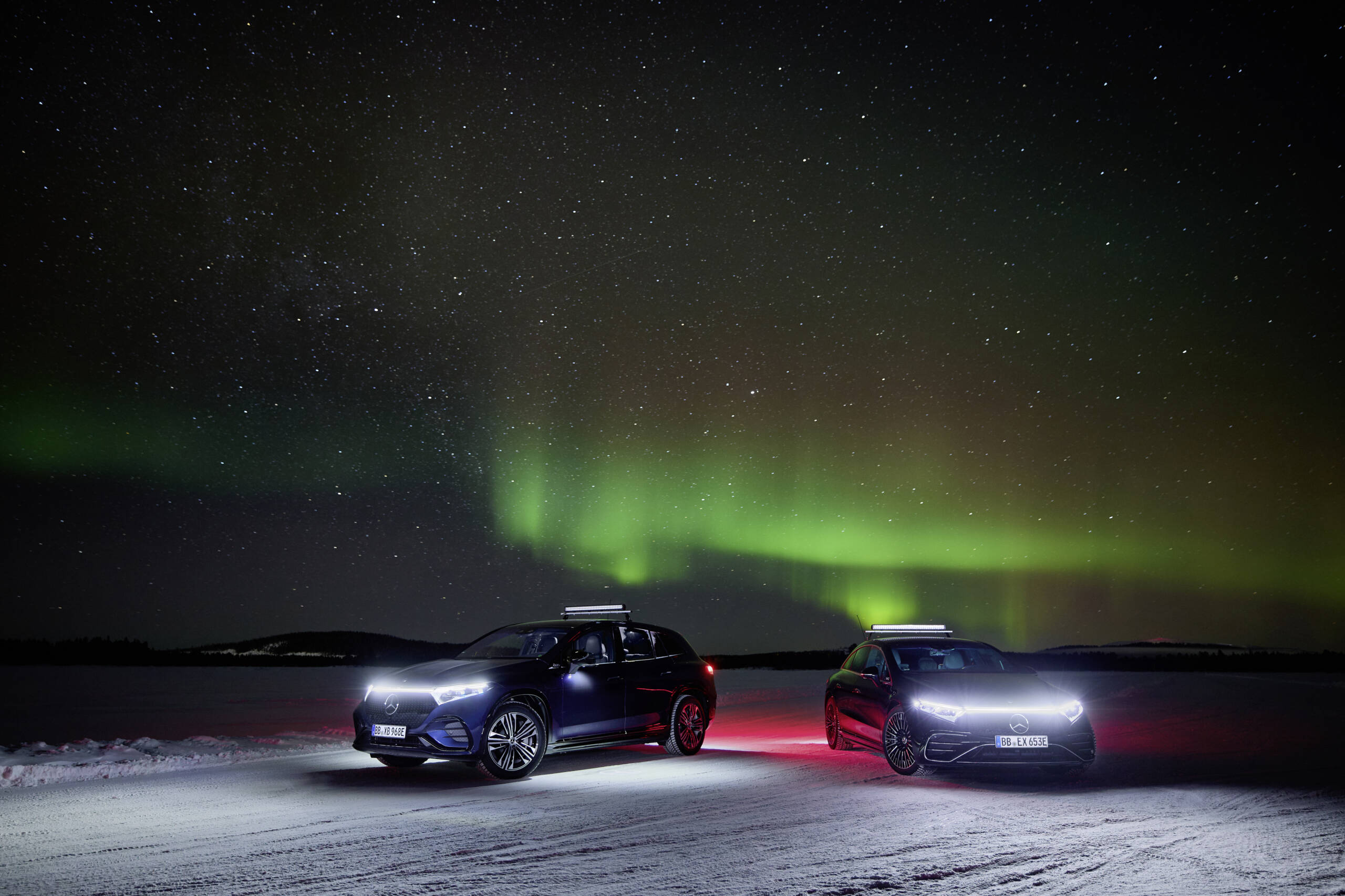
The latest generation of brake control systems for future electric platforms by Mercedes-Benz in winter testing at the Arctic Circle
Mercedes-Benz tested the latest generation of brake control systems on drives in Arjeplog, Sweden, near the Arctic Circle. For more than 20 years, an official branch of the Sindelfingen plant has existed here: its very own test centre for testing in the most extreme conditions. In addition to the EQE, EQS, EQS SUV and EQE SUV, models of future vehicle generations based on future platforms were also used in the drives across a frozen lake and up the region’s highest mountain.
The latest generation of brake control systems for future electric platforms by Mercedes-Benz in winter testing at the Arctic Circle
On the way to an all-electric future, the team is working on a new generation of stability control systems. These make use of the properties of the electric drive to precisely control the torque at the wheels. Most drivers will probably never notice how hard their Mercedes-Benz vehicles work to keep them out of dangerous situations – for Böhm and his team, this is the definition of a job well done.

Endurance tests on ice and snow
Since Mercedes-Benz established the test facility near Arjeplog, the vehicles have changed a lot. However, the reasons for coming here are still the same: compared to dry asphalt, the grip level on ice and snow is up to 90 per cent lower. These serious differences have a profound effect on the stability and controllability of a vehicle, especially when accelerating, stopping and changing direction. Another advantage is that the weather conditions and surfaces remain relatively constant throughout the winter in the Arctic Circle. The test vehicles are equipped with standard all-season or winter tyres in order to best reflect the everyday usage behaviour of customers.






